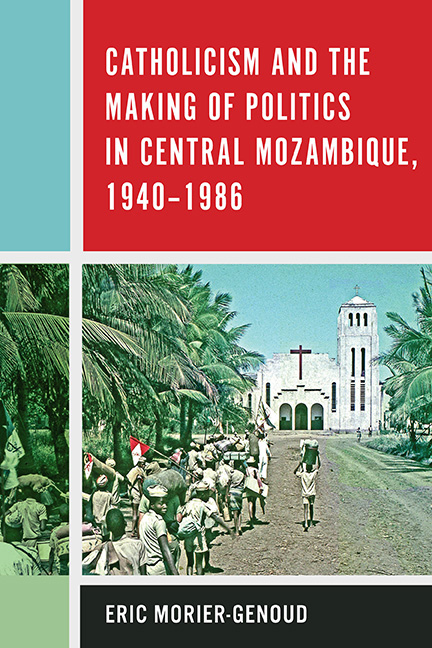Book contents
- Frontmatter
- Dedication
- Contents
- List of Illustrations
- Acknowledgments
- Note on Translations
- List of Abbreviations
- Introduction
- 1 The Making of the Diocese of Beira
- 2 Diversity and Dynamics of the Imperial Church
- 3 The Formation of an African Church
- 4 Gathering Storm: Vatican II Meets African Nationalism
- 5 Decolonization? War, Implosion, and the Vatican
- 6 Independence: Revolution and Counterrevolution
- Epilogue
- Notes
- Bibliography
- Index
3 - The Formation of an African Church
Published online by Cambridge University Press: 28 June 2019
- Frontmatter
- Dedication
- Contents
- List of Illustrations
- Acknowledgments
- Note on Translations
- List of Abbreviations
- Introduction
- 1 The Making of the Diocese of Beira
- 2 Diversity and Dynamics of the Imperial Church
- 3 The Formation of an African Church
- 4 Gathering Storm: Vatican II Meets African Nationalism
- 5 Decolonization? War, Implosion, and the Vatican
- 6 Independence: Revolution and Counterrevolution
- Epilogue
- Notes
- Bibliography
- Index
Summary
Up to the 1960s, most historical studies of Christianity in Africa focused on missions and missionaries. In the 1960s and 1970s, a new generation of scholars critiqued this approach and demanded one that looks at religion from an African angle, by looking at African churches, African personnel, and African faith. Missions came to be seen as external colonial institutions whereas African churches, personnel, and faith were considered genuine and more appropriate for understanding the development of Christianity in Africa. Today students of religion in Africa agree that the expansion and rooting of Christianity has two sides. On the one hand is the missionary church and message, brought and “developed” by external powers and institutions—what I called the “imperial church” in chapter 2. On the other hand is the “local” (African) church and Christianity that was developed either by dissident churches or within the imperial church, thus by the people who converted to the church, reappropriated its message and structures, and went on to become the backbone and leaders of the new independent institution. These processes are not exclusive or even separate; the local Church developed historically at the juncture of the imperial and African processes—in a dialectical way.
Three dynamics are key to understanding the formation of the African Catholic institution in Mozambique. First, there is the conversion of men and women to Catholicism: who converted, where, how, and with what results? Since the present study covers a whole diocese, a macro approach is taken looking at statistics, analyzing them in detail, and trying to unpack trends across the region. Second, there is the issue of appropriation and reappropriation of the church and its message, which is also examined here at a macro level, to investigate whether the adoption of certain ideas and practices led to the formation of specific forms of Catholicism in Beira. Finally, there is the issue of the development of an African clergy, the education and formation of which took place in the local seminary. I look at these aspects in turn.
- Type
- Chapter
- Information
- Publisher: Boydell & BrewerPrint publication year: 2019



